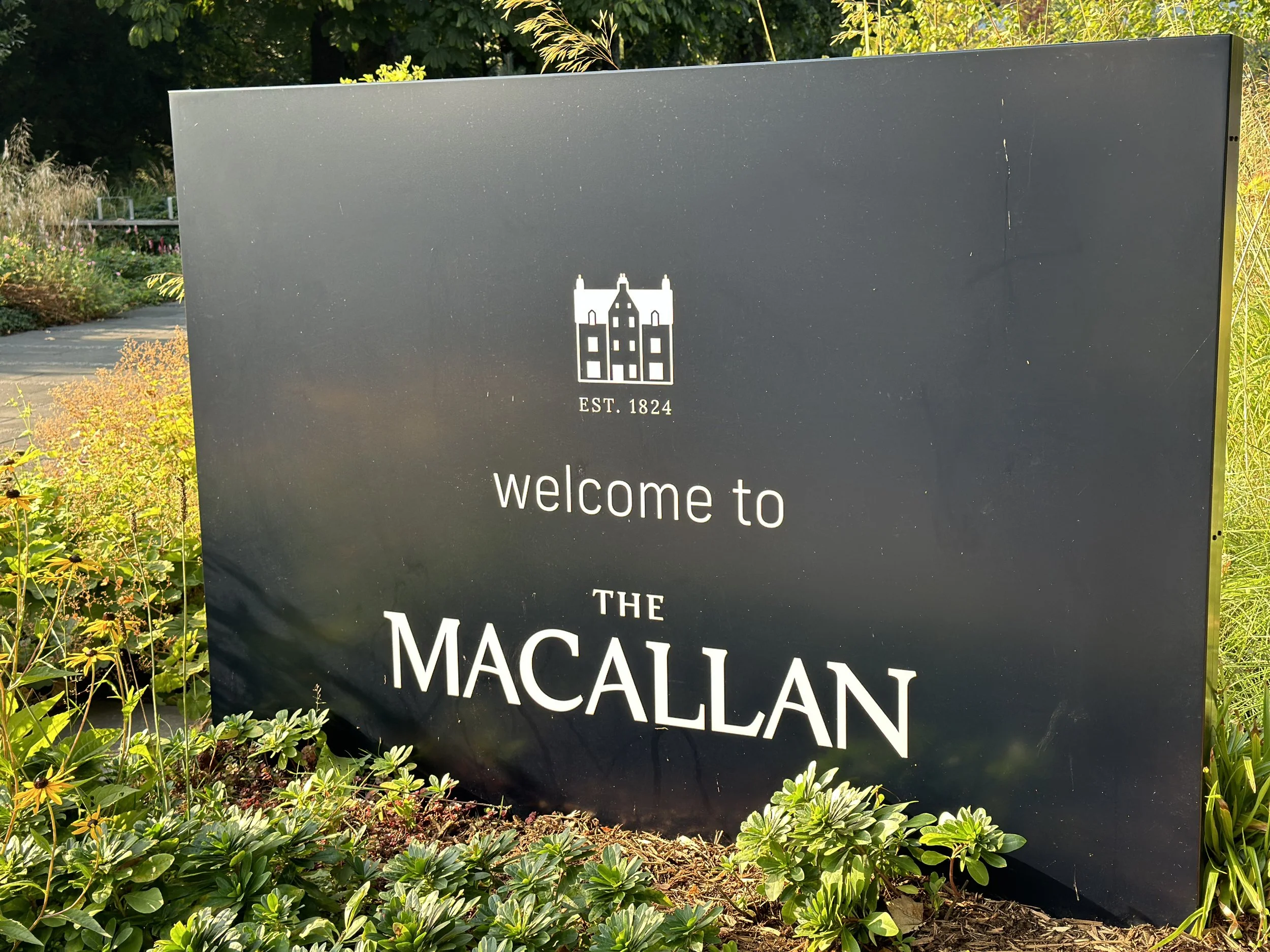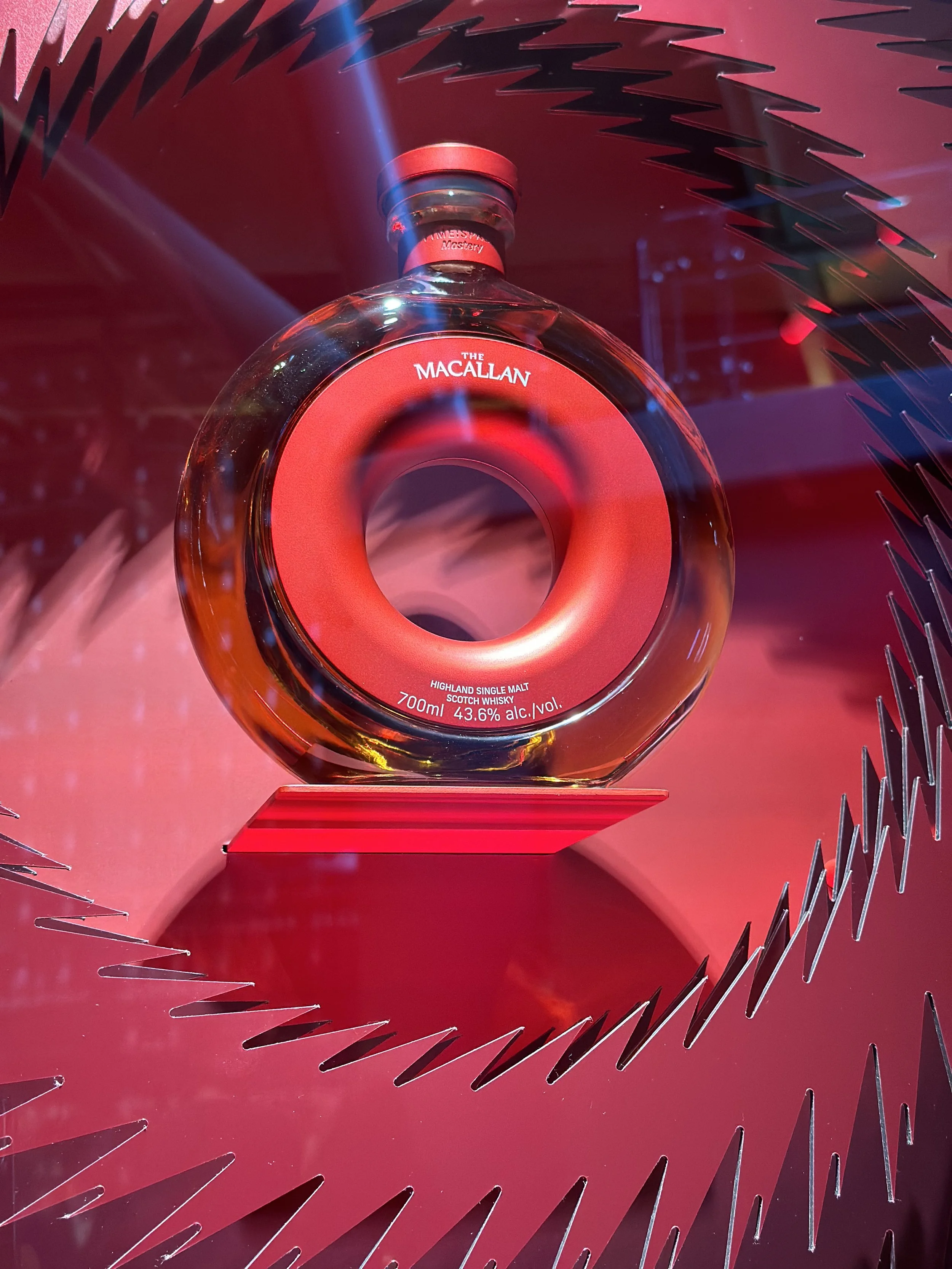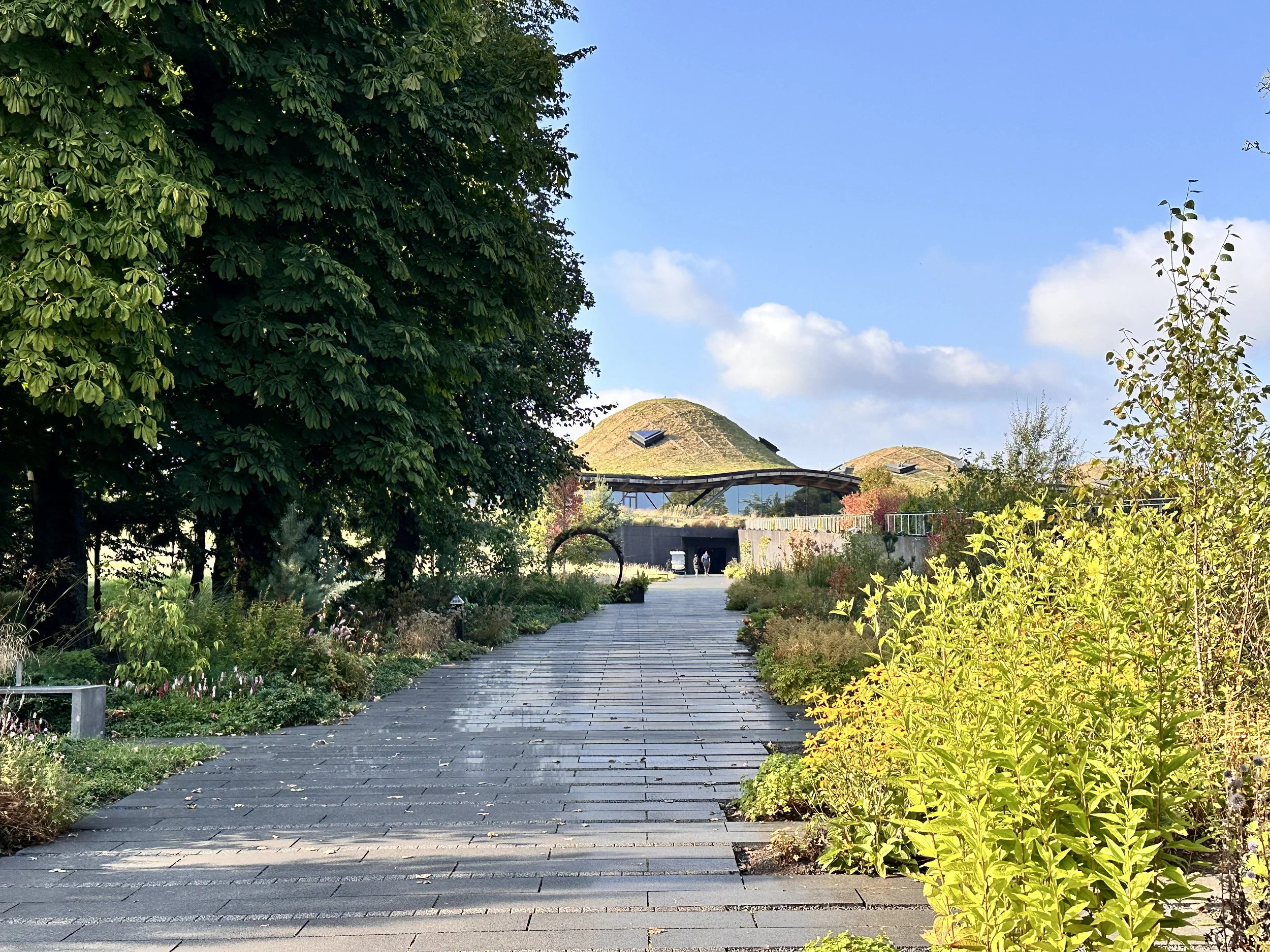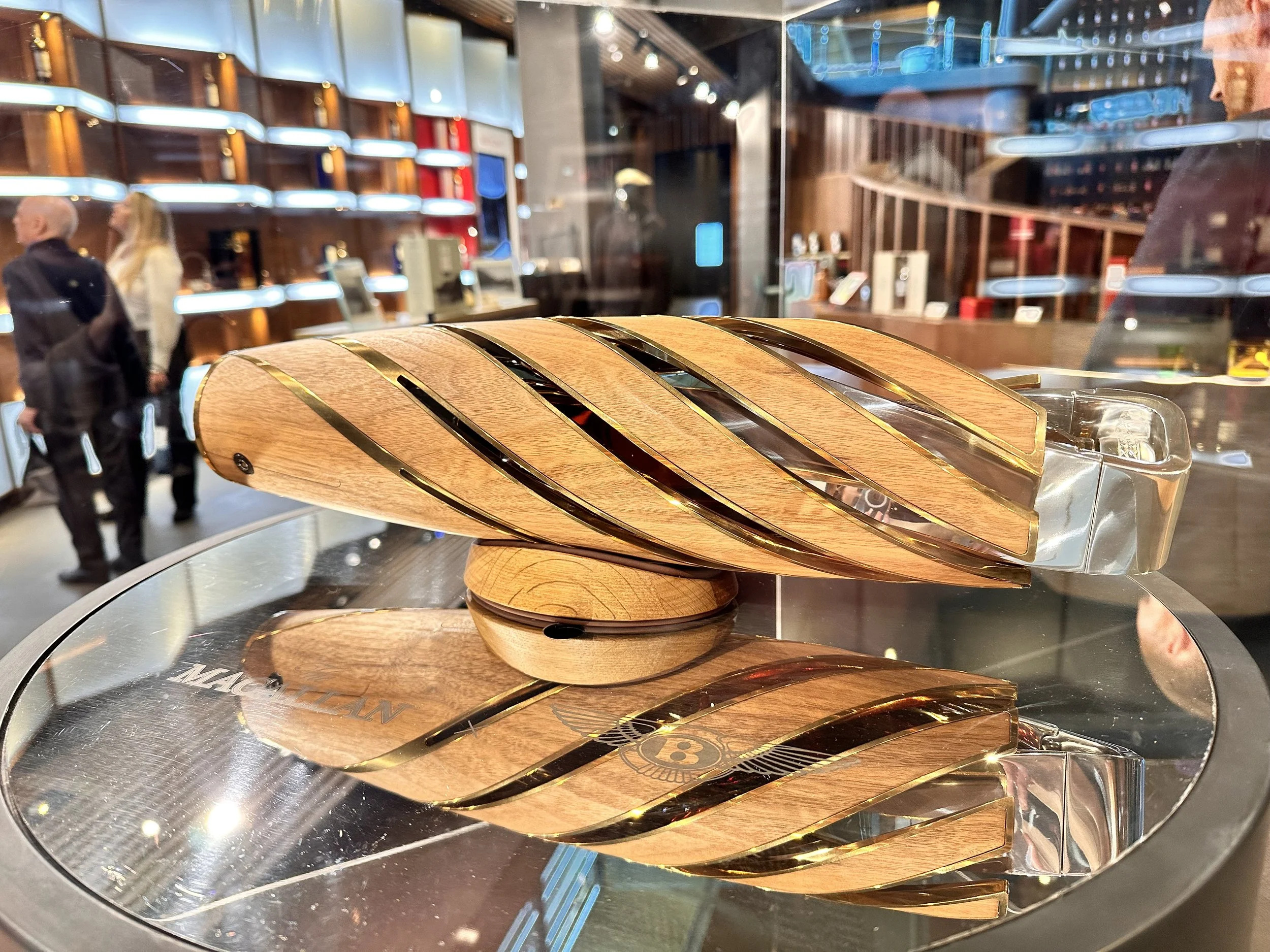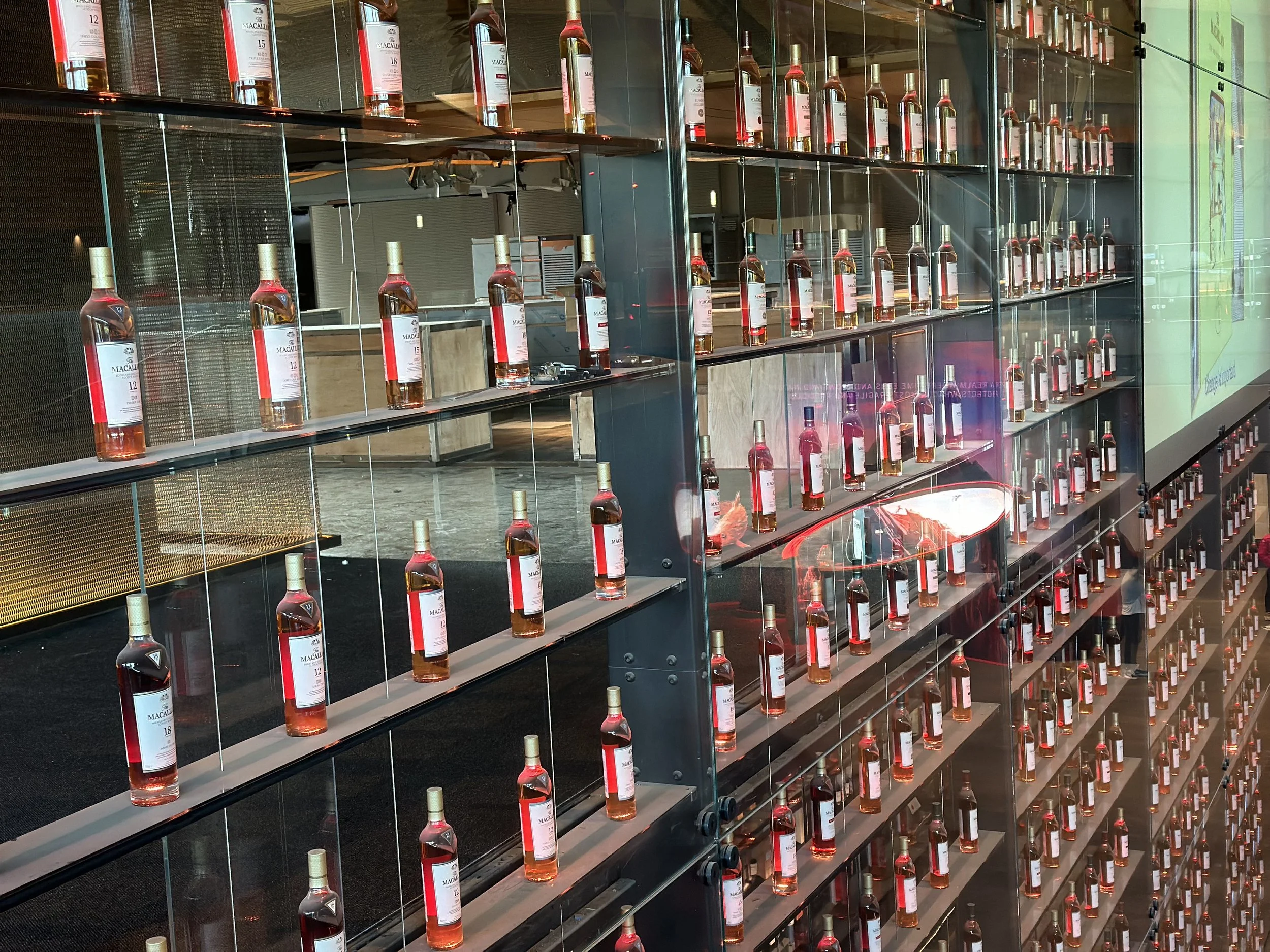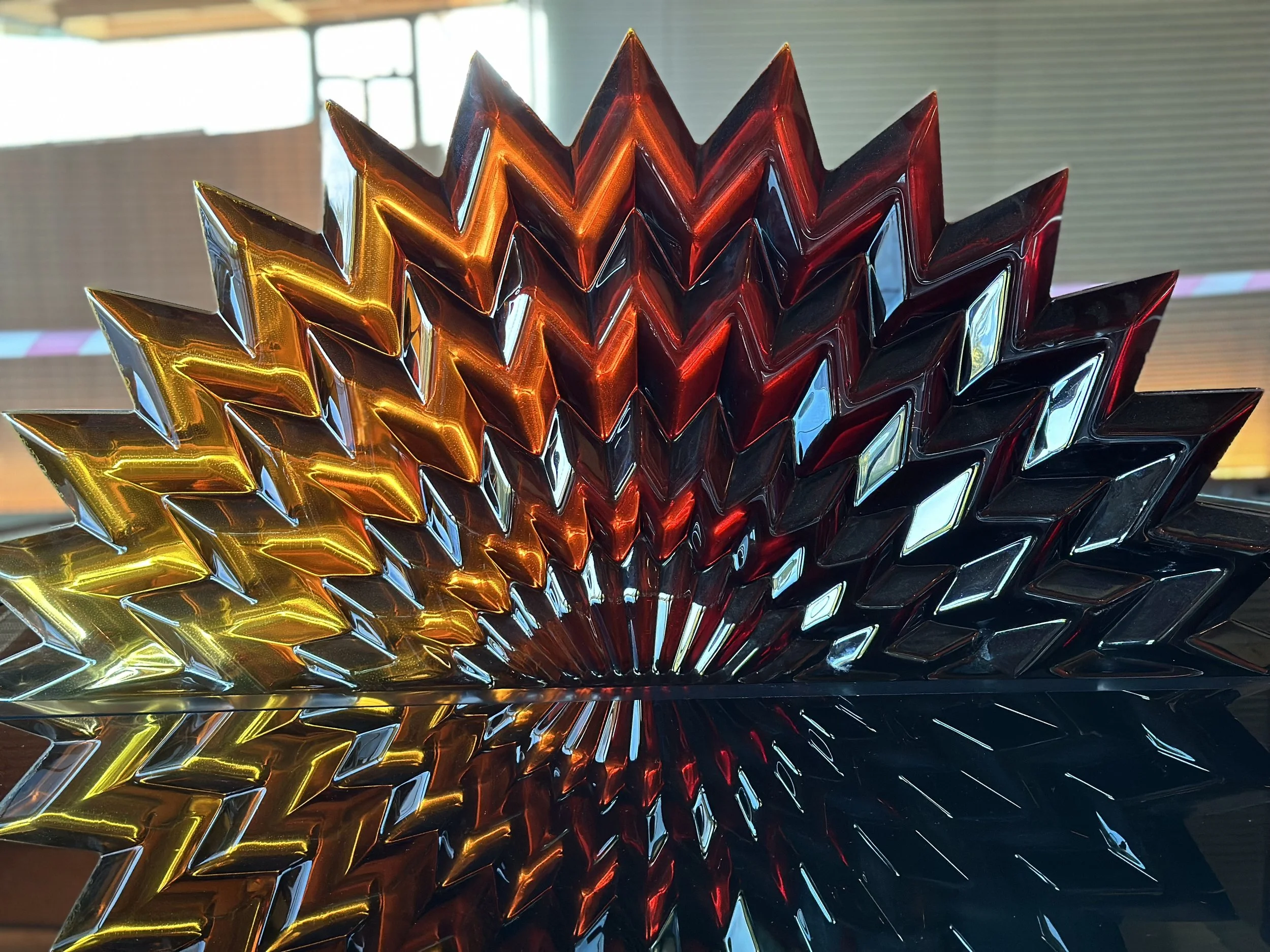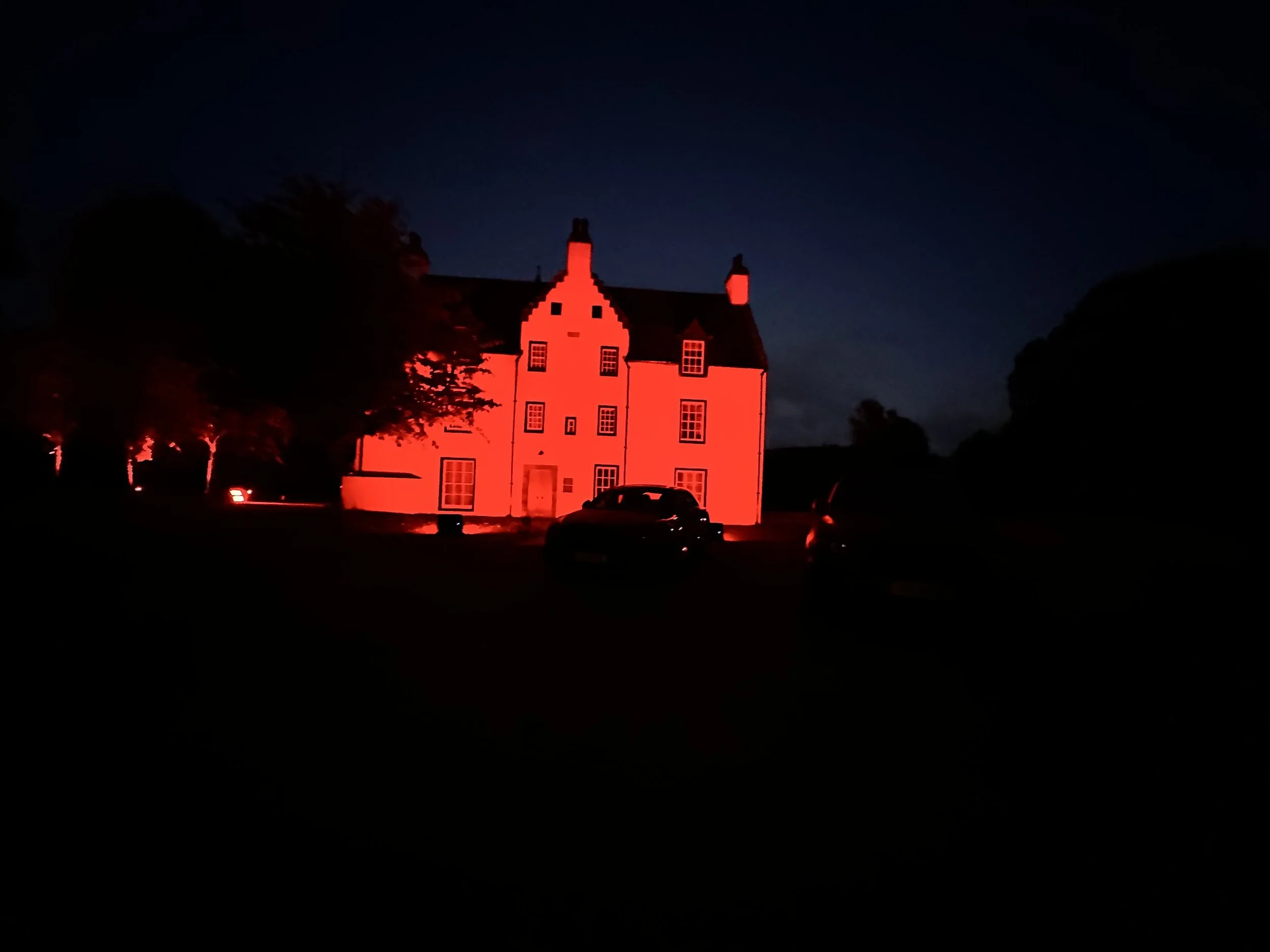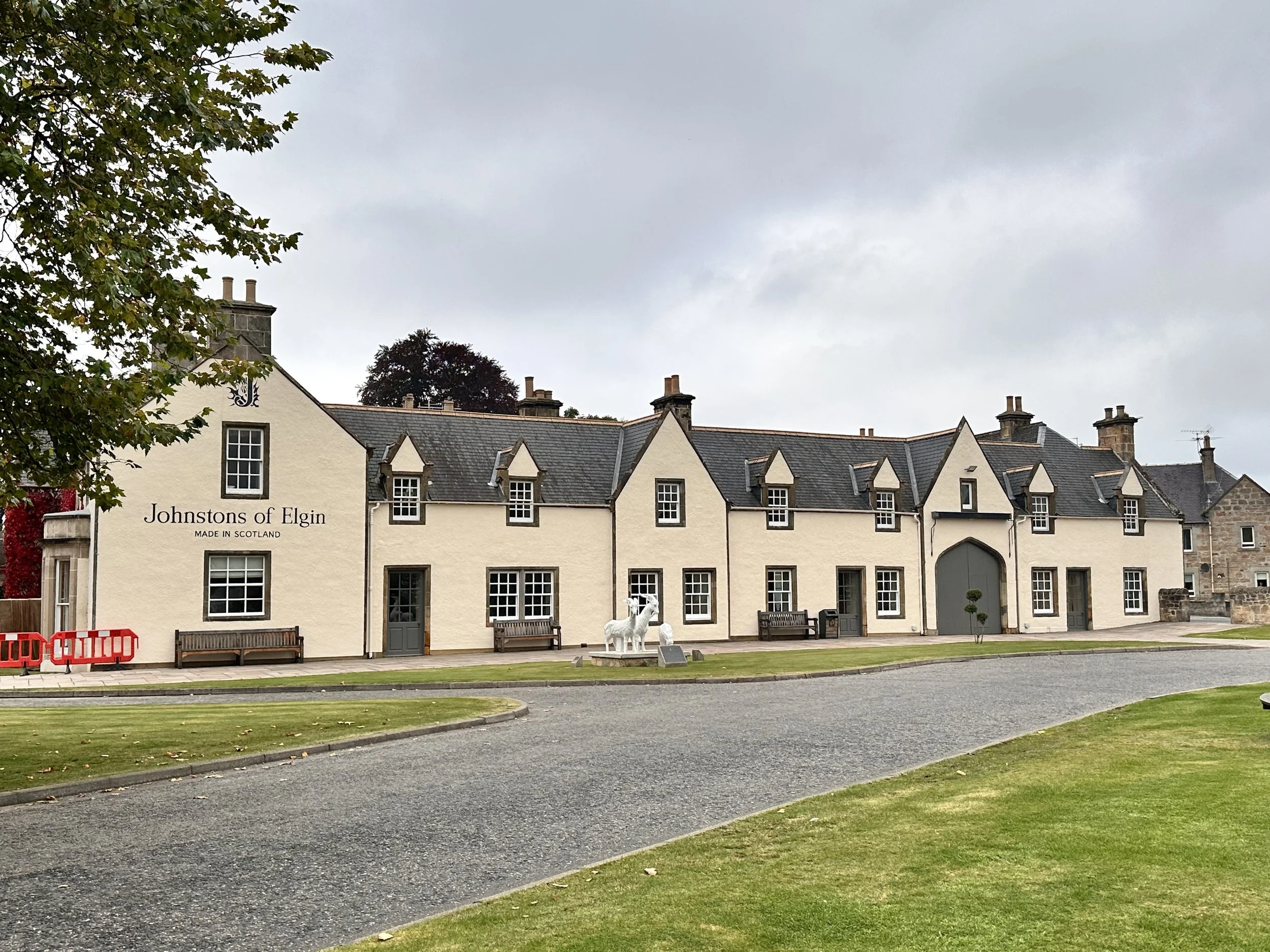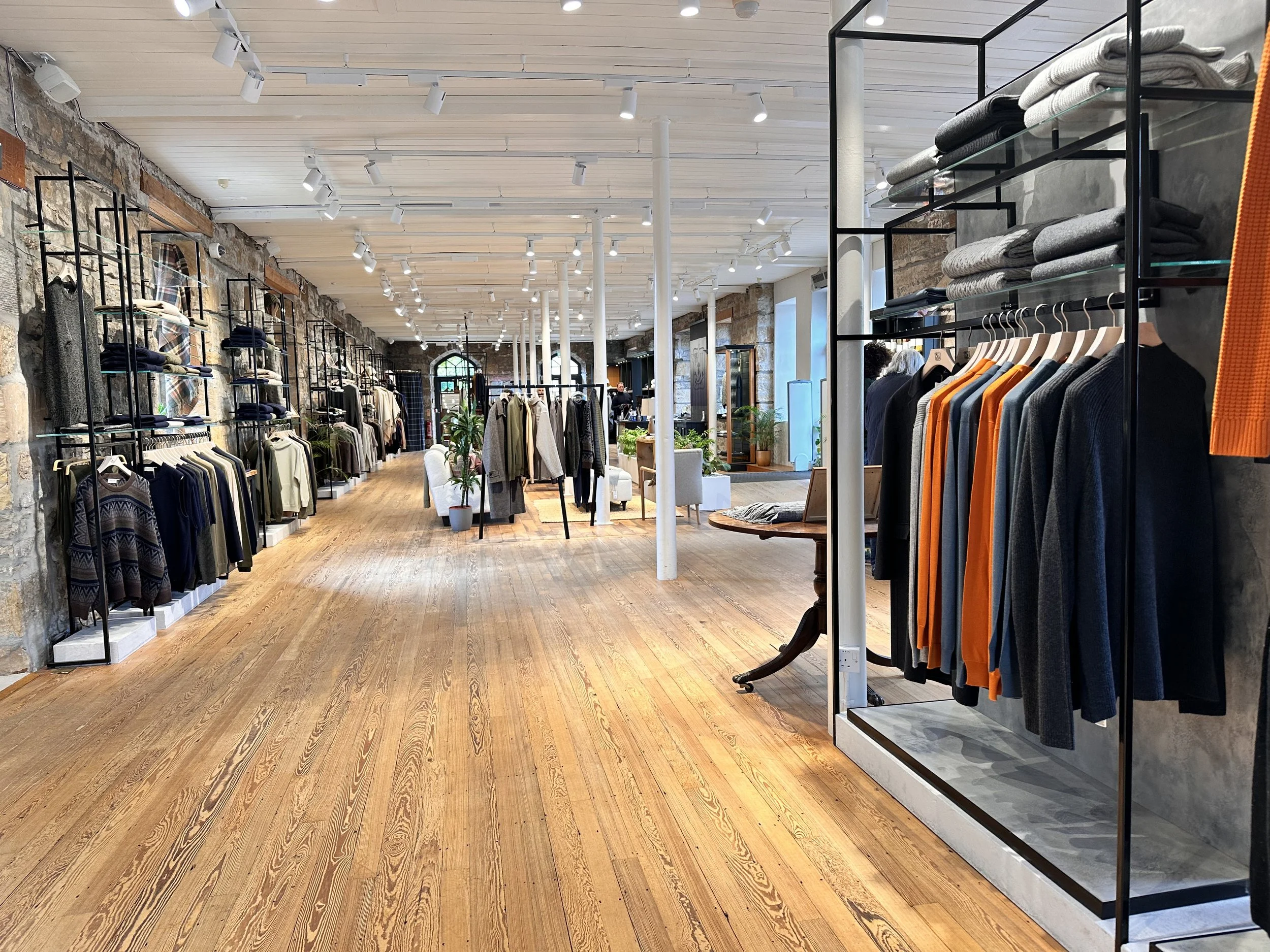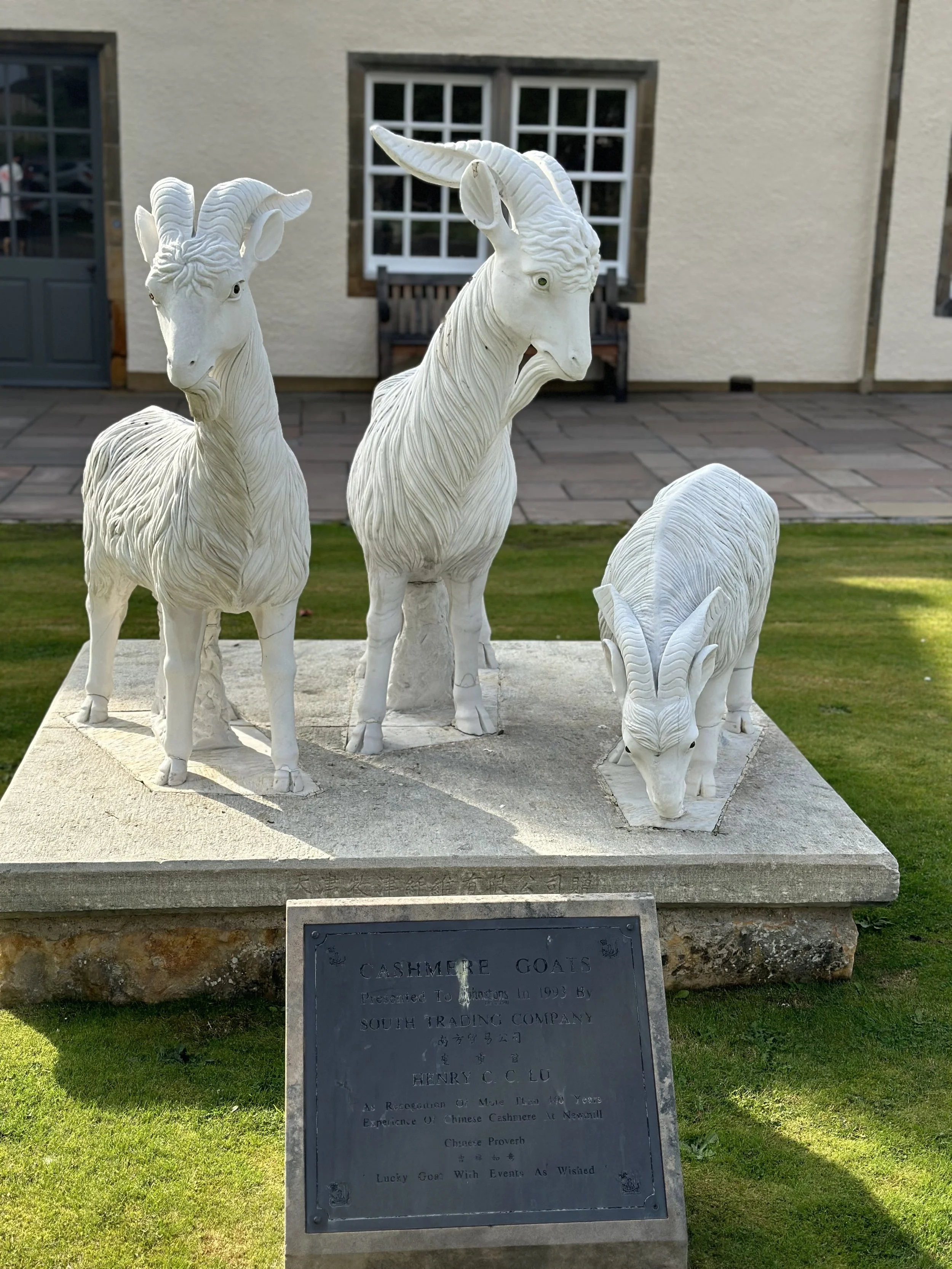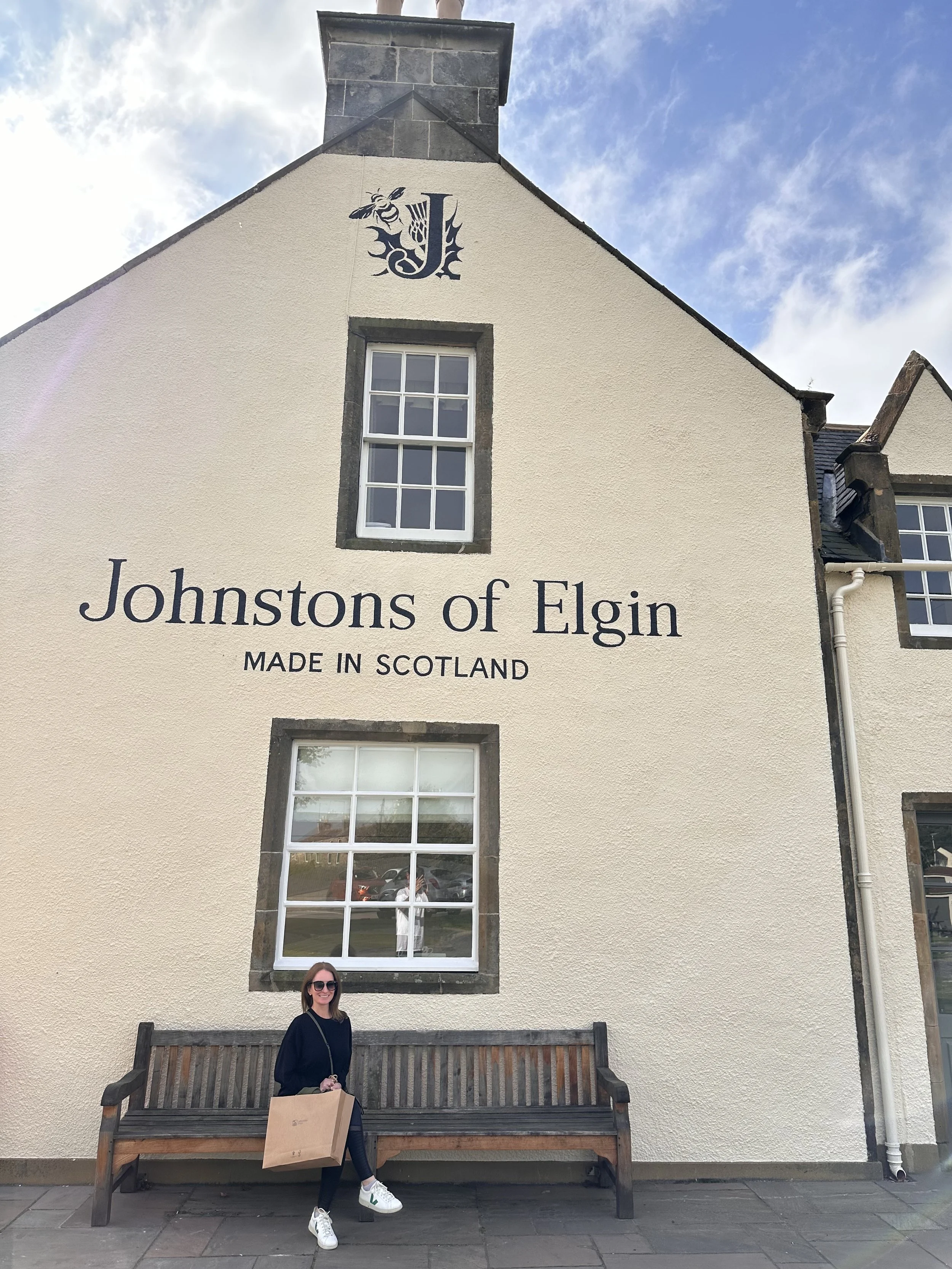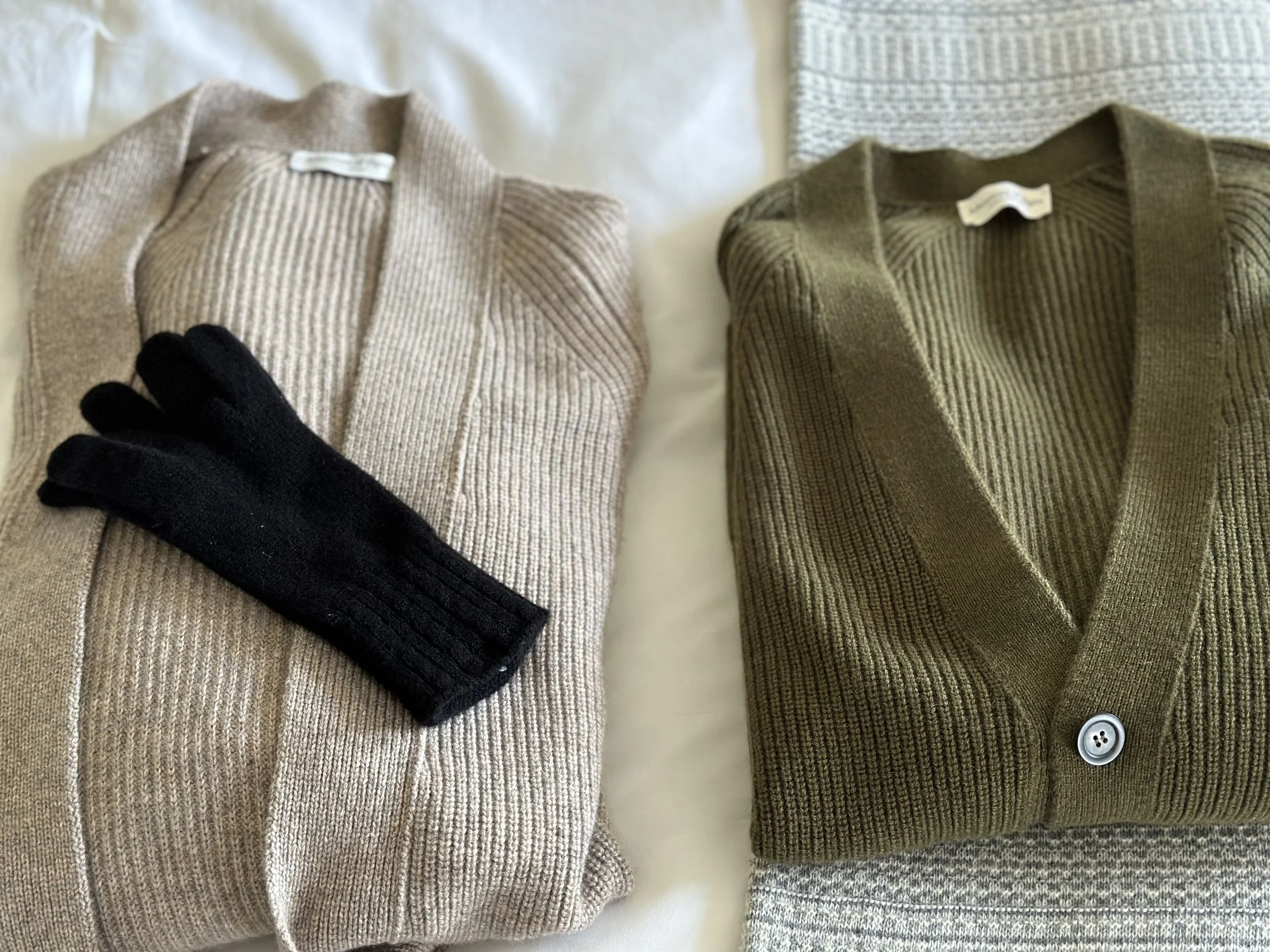Exploring Aberlour & Elgin, Scotland
Time needed in this town: 2-3 nights
The whisky trail, the home of cashmere, and so many historical places! Elgin and Aberlour are two wonderful areas in the Highlands that are surprisingly populated, yet give the feel of a small town nestled in the mountains. While we were there only one night, we were able to see enough to know we want to come back and explore the rest!
The below information is a complete guide of the best places to stay, the top rated places to dine and drink, and all there is to see and do. We’ve also included transportation tips, as well as a summary of the history of this whiskey and textile-loving area of Scotland!
Jump To:
Aberlour
Where to Stay
Per their site, “The Craigellachie Hotel was described by Condé Nast Traveller as “the oldest and greatest whisky hotel in the world” and by Vogue as “the centre of Speyside action”.
The Craigellachie has 26 bedrooms, and is home to the oldest pub in Speyside: the Spey Inn, an old drovers inn dating back to 1703, and to the world-renowned Quaich Bar, where guests and tourists can savor over 700 single-malt whiskies alongside some of the best cocktails.”
Our experience: The hotel was so warm and welcoming that it felt as though you were a guest in someone’s home. Our room was beautiful and extremely comfortable. The breakfast the next morning (included) was also wonderful. We hope to stay there again when we visit more of the distilleries in the future!
NOTE: Spey Inn service is very slow. Despite having a reservation, we didn’t get our meal for nearly 1 1/2 hours. Dine at the other options we’ve listed in the next section.
Other recommendations
Where to Dine & Drink
57
Per their site, “The menu here is seasonal, reflecting that all our fresh ingredients are sourced locally and sustainably: whether it be venison and game from the Ballindalloch Estate, fresh fish from Portsoy or fresh lobster from Lossiemouth. Dinner guests can take the 'when in Rome' option and enjoy traditional dishes such as Haggis, Neeps and Tatties in a Whisky Cream Sauce or they can tempt their palate with cuisines from further afield such as Massaman Lamb Curry.”
FUN FACT: The name of the restaurant comes from the title records that the Dowans sits 57 degrees parallel north of the earth's equator!
Co-Op Food
A great supermarket for picking up a few provisions.
Macallan Brassiere
Features a six-course tasting menu using the finest ingredients and inspired by The Macallan’s iconic setting.
Plum Garden
Takeaway Chinese
Seven Stills French Restaurant and Malt Whisky Bar/Lounge
Serving French fare + whiskey. Note: They are not gluten-free-friendly.
The Caipercaillie
Serving small plates of meat and seafood with a great wine and whisky list!
The Fiddichside Inn
Whisky only.
The Gather’n Café
Per their site, “Using the best local produce and supporting local suppliers for our home-cooked breakfast, lunch and coffee/ tea and cake.”
The Highlander Inn
Serving traditional Scottish meals. Note: They are not gluten-free-friendly.
Things to See & Do
Aberlour Distillery
Since 1879, the Aberlour Distillery has been producing whiskys and while it has changed hands several times throughout the centuries, it still uses the same recipes. There are no tours of the distillery however, there is a large visitor’s center with tastings.
Ben Rinnes (MoraY)
Ben Rinnes is the dominating summit of Moray and is a very popular, moderate-level hillwalk that takes about 5 miles (3+ hours) to complete.
Cairngorms
The Cairngorms contains the finest collection of different landforms outside arctic Canada – from granite tors to heavings and leavings from Ice Age glaciers. The Spey, Dee, and Don valleys are major features of the lower ground. Around 2 million people visit the Cairngorms each year to ski, walk, and fish.
Want a private park tour? Click here.
GlenAllachie Distillery
Built in 1967 by Mackinlay McPherson, the GlenAllachie distillery, was then bought and mothballed by Invergordon Distillers in 1985. They sold it to Campbell Distillers in 1989, who restarted the distillery. In 2017, the distillery was sold to Billy Walker, Graham Stevenson, and Trisha Savage, who came together as The GlenAllachie Distillers Company Limited, along with two blended Scotch whisky brands - White Heather and MacNair's. In 2024, the distillery carried out a rebranding. This gave the bottlings a new look and limited special bottlings were henceforth summarized under the name "Wood Collection". The rebranding also introduced the slogan "whisky in good hands".
Highland Folk Museum
Step back in time and experience life in the Highlands from 1700s to the 1950s. The Highland Folk Museum has over 35 historical buildings onsite for you to explore and discover how people in the Highlands lived, worked, went to school, and enjoyed their leisure time. It is considered the UK’s first “open air” museum.
Malt Whisky Trail
Eight malt whisky distilleries and a cooperage form the Malt Whisky Trail in Scotland's Speyside. Seven of the eight distilleries are in production and operational, while the Dallas Dhu distillery is a historic distillery and is for historical tour purposes only.
Over half of Scotland's malt whisky distilleries are in Speyside, not all of which are open to the public. The heritage trail consists of the following Speyside single malt distilleries and a cooperage: Benromach, Cardhu, Dallas Dhu, Glen Grant, Glen Moray, Glenfiddich, The Glenlivet, Speyside Cooperage, and Strathisla.
River Spey
The River Spey is a river in the northeast of Scotland. At 98 miles long, it is the 8th longest river in the United Kingdom and the second longest and fastest-flowing river in Scotland. It’s an important location for the traditions of salmon fishing and whisky production in Scotland.
Speyside Cooperage
Owned by the Taylor family since its founding in 1947, The Speyside Cooperage was sold in 2008 to the French firm, Tonnellerie François Frères. The cooperage’s visitor center, started in the early 1980s, is the only such in Britain.
Each year, the cooperage produces and repairs nearly 150,000 oak casks, used by the surrounding Speyside Whisky distilleries, as well as distilleries elsewhere throughout Scotland and in the U.S.
Speyside Whiskey Day Tour from Inverness
Spend a day tasting Scottish whisky on tour to Glen Moray and Tomatin Distillery, with a photo stop at Elgin Cathedral. Travel through gorgeous Highland scenery on this full-day whisky tour, which includes round-trip transport from a central location in Inverness, and is limited to 16 people for personal service.
Looking for a private day tour? Click here.
The Macallan Distillery
The Macallan Estate is the birthplace of every bottle of the Macallan single malt whisky made, since 1824. Built in 2018, the new distillery is an architectural “masterpiece”, set on the 485-acre site, which includes 1.8 miles of The River Spey.
In addition to whisky experiences, The Macallan Estate boasts fine-dining, private shopping, and fishing.
THE HERITAGE TOUR
While the visitor’s center is impressive (there are 728 bottles in a glass wall), the Heritage Tour is even more so. Our guide, Erica, took us through the whisky museum (our first dram in hand) to educate us on the most significant moments in Macallan’s history, including nearly every notable bottle of whisky they have ever made. From there, we went upstairs to see the distillery itself, which, out of all the distilleries we’ve been to, this one is the most impressive one we’ve seen yet. While she walked us through the distilling process, she spent more time talking about the stills themselves, their shape, what it means, and what that does for the whisky. From there, we went back in to do our tasting: 12-year, 15-year, and 18-year were all handed out, then the 30-year came out, which was a huge surprise. From there, we saw a video of how they treat their barrels, then to the barrel cave, then down to the store to try one more limited edition whisky - the Terra.
For the money we spent per person, we ended up getting a lot more than we had expected, especially since some of those whiskies are hundreds of dollars a bottle.
NOTE: Any and all experiences must be booked at least 24 hours in advance however, these experiences book up quickly!
TIP: It is extremely hard to find a taxi and if you’re a driver, you’re not allowed to drink - they check who is driving. Instead, they will give you driver’s drams to take home with you.
Walker’s Shortbread Factory shop
FUN FACT: Walker’s Shortbread Headquarters is in Aberlour. Even more fun fact: They have a factory shop you can visit! This includes cookies that didn’t quite pass “muster” (we’ve heard they are still quite delicious), as well as gift tins and more.
Elgin
Where to Stay
Where to Dine & Drink
Ada Turkish
Serving Turkish dishes.
Batchen Street Coffee
Serving freshly roasted coffees, teas, hot chocolates, and baked goods.
Harper’s Coffee Shop
Serving freshly made baked goods, coffee & tea drinks, as well as hot meals. Note: They do have gluten-free options.
Nae Bad Food
Specializing in loaded fries and burgers. Note: There are only two items on the menu that are gluten-free - the nachos and the nacho-loaded fries (salsa, guac, and sour cream).
Orrin Restaurant and Bar
Their menus focus on different regions in the world, depending on the menu you select.
Panache
Indian and Bengali Cuisine
The Ditsy Teacup
Per their site, “We bake scones every day and make both vegetarian and meat based soups on the premises. In addition we are always making traybakes, cakes and brownies as well as offering sandwiches, wraps and baked potatoes and last but not least an extensive breakfast menu. “ Note: They are NOT gluten-free-friendly.
The Drouthy Cobbler
Laid-back tavern serving seasonal comfort grub, speciality cocktails & coffee in a cozy setting.
The Humble Burger
Specializing in wholesome Seattle street food from the best local suppliers. Note: Their specialty is scotch beef burgers and loaded fries. Note: They are NOT gluten-free-friendly!
The Little Lunchbox
Serving freshly prepared baguettes, sandwiches, toasties, paninis & salad boxes. Note: They are NOT gluten-free-friendly.
Weavers
They have a lovely breakfast and lunch menu with traditional Scottish dishes. Note: They are very gluten-free-friendly!
Things to See & Do
Biblical garden elgin
Opened in 1996, The Biblical Garden was developed from an idea of Donald McBean’s, then Senior Horticultural Officer with Moray District Council. Planning started in the early 1990’s to create a beautiful garden, welcoming to all, where well-known Bible stories could be brought to life with statues and plants mentioned in the Bible.
cove bay
Cove Bay is a picturesque beach located in Duffus, United Kingdom. The beach is approximately half a mile long and features golden sand with stunning views of the Moray Firth. Cove Bay is an ideal location for families and tourists who want to enjoy a relaxing day by the sea.
duffus Castle Gallery
Duffus Castle was a fortress–residence for more than 500 years, from the 1100s to the 1700s. The stone castle we see today was built in the 1300s, replacing an earlier timber fortress.
Once one of the strongest castles in Scotland, it was reduced to a decaying ruin by the time of its abandonment in 1705. You can still walk the grounds today.
Elgin Cathedral
Established in 1224, Elgin Cathedral stood outside the burgh of Elgin, close to the River Lossie., replacing the cathedral at Spynie, located 2 miles to the north, which was served by a small chapter of eight clerics. By 1226, the new and developing cathedral was staffed with 18 canons, a number that increased to 23 by 1242. A damaging fire in 1270 led to significant enlargement. It remained unscathed during the Wars of Scottish Independence, but suffered extensive fire damage in 1390 when attacked by Robert III's brother, Alexander Stewart, Earl of Buchan, also known as the “Wolf of Badenoch”. In 1402, the cathedral precinct faced another incendiary attack by the Lord of the Isles followers.
By the time of the Scottish Reformation in 1560, the number of canons had increased to 25. After those events, the cathedral was abandoned, with its roof's lead waterproofing removed in 1567. While still largely in-tact in 1615, a winter storm brought down the roof covering the eastern limb. In the spring of 1711, the central steeple above the crossing collapsed, taking the walls of the nave with it. Conservation efforts began in the early 19th century and continued until the end of the 20th century, with significant improvements to the two western towers.
Today, it’s still considered a ruin, but is safe to walk through and around.
elgin museum
Explore Elgin’s rich heritage through two floors of interactive exhibits. You can almost hear the watch ticking at the Elgin National Watch Company, get behind the wheel of an Elgin Road Race car, view products Made in Elgin, and learn about the people and events that have shaped Elgin since 1835.
Glen Moray Distillery
Glen Moray started life as West Brewery in Elgin, run by Robert Thorne & Sons, and was converted to a distillery with two stills in 1897. Following a fire and extensive rebuilding program at their Aberlour Distillery, the company focused on production of Aberlour whisky, allowing the Glen Moray distillery to run down. It was closed in 1910.
In the 1920s, the distillery was purchased by the owners of the Glenmorangie Distillery - the MacDonald and Muir families. The distillery received two additional stills in 1958 and at present, has an annual capacity of around 2,000,000 litres.
In 2004, MacDonald and Muir families sold Glen Moray distillery and Glenmorangie distillery to LVMH. Four years later, it was sold to La Martiniquaise.
NOTE: They have a tasting room but do not do tours.
Gordon & MacPhail
What started out as a grocer that curated specialty items, turned into a whisky business, dounded in 1895.
In 1993, the family purchased of the Benromach Distillery on the outskirts of Forres, just 12 miles from the steps of the shop in Elgin. The distillery was officially opened by HRH Prince Charles in 1998. They are a rare example of remaining family-owned and operated.
NOTE: They only do whisky tastings out of their shop.
Johnstons of Elgin Woolen Mill
Since 1797, Johnstons of Elgin have been making luxury fabrics, clothing, and accessories for royalty and fans of luxury goods. At their Elgin mill, the only vertical weaving mill in Scotland, you can learn about some of the 30 processes involved in crafting a single scarf, while learning more about the families that have shaped their history.
FUN FACT: They are responsible for weaving the cashmere blankets for Hermés, as well as many other luxury brands. You can purchase the non-”H” version of the blanket in their store or on their site.
lady hill (Elgin) castle
Built in 1160, Elgin Castle was founded by David I, in association with the creation of Elgin as a royal burgh in that year. It was thought to be used by Edward I as a residence in 1296. In 1303, it was burned by the Scots and again in 1307. Later that century, the castle was repaired by the Earls of Moray, though sacked in the 1450s, during the Douglas rebellion, after which the Dunbar Sheriffs used it as a residence in town, part of which survives as the (currently closed) Thunderton House public house.
moray Motor Musem
The Moray Motor Museum houses a superb collection of veteran, vintage, classic cars and motorbikes.
Mossend Farm: Alpaca Days Out
Since 2004, Mossend Farm has been caring for nearly 60 alpacas. From March to September, they host “Alpaca Days Out” for people to be able to interact with these soft, sassy, and curious animals. There’s also a small shop that sells alpaca fur products, including soft fleeces!
Pluscarden Abbey
Founded in 1203 by Alexander the II of Scotland, Pluscarden Abbey is the oldest surviving benedictine monastery still used for its original purpose.
HOW TO GET THERE: It is a rather long walk from the car park but completely worth it.
TIP: If you join during one of their prayer sessions, be sure to stand up when the monks leave the chapel as a sign of respect.
Spynie Palace
Founded in the 12th century, Spynie Palace, also known as, ‘Spynie Castle’, was the fortified seat (residence) of the Bishops of Moray until 1682 when it was annexed to the Crown and rented out for £12 a year.
The Benriach Distillery
Established by John Duff in 1898, The BenRiach Distillery is one of two distillers he owned (the Longmorn Distillery is the other). The distilleries were joined by a private railway with a private steam locomotive, the Puggy, to transport coal, barley, peat, and barrels between the distilleries. Soon after that railway was established in 1900, the distillery stopped production in the wake of the bankruptcy of Pattison's whisky, a major Scotch Whisky purchaser. Only BenRiachs maltings remained in active use, producing malt for Longmorn. It didn't produce spirits again until 1965 when it was reopened by Glenlivet Distillers Ltd.
In 1978, the distillery changed hands again though this time, to Seagrams, who became part of Pernod Ricard in 2001, which is when the BenRiach distillery began operating for just three months of every year. In 2004, the distillery was acquired by an independent consortium, the BenRiach Distillery Company Limited, formed by two South African funding partners, Geoff Bell and Wayne Keiswetter, and Scotch whisky expert Billy Walker.
In 2008, the company expanded their portfolio with the acquisition of the Glendronach distillery. as well as the Glenglassaugh distillery in March 2013. The distillery was sold off as a subsidiary on June1, 2016 to Brown–Forman.
NOTE: Tours are available, but must be booked in advance.
How to Get Around
Air
Inverness Airport is the main airport for the Highlands. Scheduled flights operate to and from Manchester, Birmingham, Bristol, Belfast City, Dublin, London Heathrow, Gatwick and Luton, Amsterdam, and more. A full destination list can be found here.
Aberdeen International Airport is the main airport for the North East of Scotland and connects to many UK and European cities. A full destination list can be found here.
Car
Elign and Aberlour are both accessible by car:
Inverness: 56 miles (90 kilometres), 1 hour 23 minutes
Aberdeen: 62 miles (100 kilometres), 1 hour 26 minutes
Dundee: 127 miles (204 kilometres), 2 hours 54 minutes
Edinburgh: 160 miles (257 kilometres), 3 hours 37 minutes
Glasgow: 175 miles (282 kilometres), 3 hours 50 minutes
Rail
ScotRail, Scotland's national railway service, connects Speyside to Inverness, Aberdeen, and beyond. The nearest stations to Speyside are Forres, Elgin, Keith and Aviemore.
For timetables and routes, up-to-date journey information and to book tickets, visit the ScotRail website at the link above.
The Caledonian Sleeper Service travels between London and Scotland including Inverness and Aberdeen.
Taxis - A must for whisky tastings!
If you are going on a whisky tasting experience or a whole tour, note that there is a strict no tolerance policy. The distilleries will demand you use a taxi service or your driver will have to save their driver drams for later. The only one really available in the area Speyside Taxi HOWEVER, they will be unwilling to assist you if the distance between your hotel and the distillery is too short of a trip but as we have learned, it’s not worth their time to drive you if you are heading to only one.
A History Summary
Aberlour
1654 - A site known was “Abirlaur” was found on a map dated from that time.
1812 - The current village was founded by Charles Grant of Elchies.
1814 - The village was granted its feu charter and began to operate its own markets.
1823 - The Excise Act was passed and longer warehousing whisky processes were introduced. As a result, the first whisky distillery was built on the lands of Aberlour House (it was demolished when the property changed hands), with many other distilleries to follow, all over the surrounding areas.
1865 - 1866 - Water was supplied in 1865 and street lighting in 1866.
1875 - Aberlour once was the site of an orphanage that was founded in this year.
1879 - James Fleming built a new Aberlour distillery, alongside the Lour Burn, which is now owned and operated by the Pernod Ricard group of companies.
1889 - 1902 - The Fleming Hall, The Fleming Cottage Hospital, and The Victoria Bridge were all built during this time.
1894 - The inhabitants formed a “police burgh” governed by elected commissioners.
1905 - 1930 - Aberlour Golf Club was founded and operated.
2004 - Walkers Shortbread moved their headquarters into Aberlour House
Elgin
9th century - Evidence suggests there may have been an early Christian presence.
1151 - Elgin is first recorded in a charter of David I in which he granted an annuity to the Priory of Urquhart.
1130 - David I made it a royal burgh - a castle was also built atop Lady Hill.
1224 - The town received a royal charter from Alexander II when he granted the land for a new cathedral to Andrew, Bishop of Moray. The foundation stone of the new Elgin Cathedral was ceremoniously laid as well.
1242 - 1270 - The Cathedral of Elgin was completed in 1242, though nearly destroyed in a fire by 1270.
1307 - 1308 - Robert the Bruce attacked Elgin and then retook Scotland.
1370 - Alexander Bur, Bishop of Moray began payments to Alexander Stewart, Wolf of Badenoch, King Robert III's brother, for the protection of his lands and men.
1390 - The bishop then turned to Thomas Dunbar, son of the Earl of Moray, to provide the protection. This action infuriated Stewart and in June, he burned much of Elgin.
Late 14th century - early 19th century - The focus of the town had been the deteriorating condition of Elgin Cathedral and how stripping it of its lead weatherproofing, completely destroyed what otherwise would have remained a largely in-tact church.
1819 - Dr. Gray's Hospital was built on unused ground.
1821 - The Assembly Rooms were built.
1828 - The new parish church of St Giles was built.
1841 - The Burgh Court House was built.
1842 - The museum was completed.
1852 - 1881 - The Morayshire Railway was officially opened, though was later bought by The Great North of Scotland Railway.
1866 - The Elgin Sheriff Court was built.
1882 - Elgin had a post office, bank, insurance, and telegraph departments,
